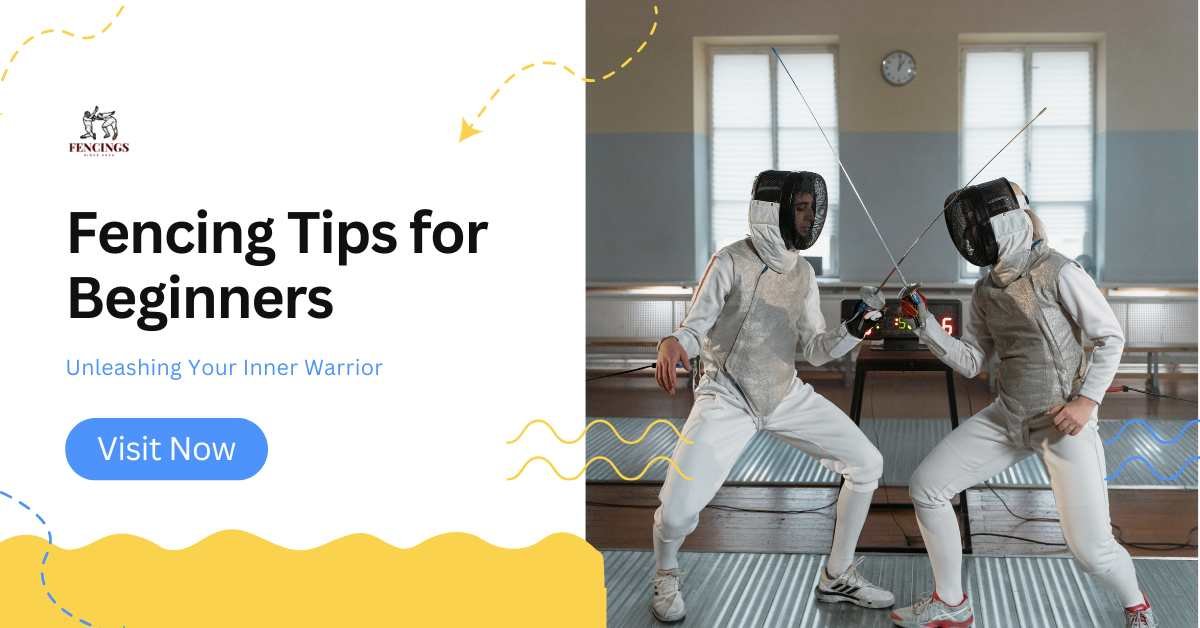Introduction: The Dance of Steel and Strategy
Fencing is a swish and strategic recreation that combines agility, precision, and tactical questioning. Whether you are attracted to the foil’s beauty, the epee’s power, or the sabre’s speed, fencing tips for beginners can help you embark on a profitable adventure in this timeless martial art.
Fencing is often likened to physical chess, where each move must be calculated with precision and foresight. This sport, rooted in centuries-old European martial traditions, has evolved into a modern Olympic discipline that emphasizes speed, strategy, and athleticism.
Whether you aspire to compete at high levels or truly are seeking a dynamic form of exercise, fencing offers precise benefits. It enhances physical fitness, sharpens mental acuity, and cultivates discipline and admiration. As you embark on your fencing adventure, these amateur recommendations will guide you through the initial stages, helping you navigate the complexities and embody the elegance of fencing.
What is Fencing?
Fencing is a sport with roots in swordsmanship, dating back to ancient times. It entails two opponents defending with swords while carrying protective gear. The three foremost types of fencing guns are the foil, épée, and sabre, each with its own set of regulations and strategies.
Fencing is not just about physical prowess; it additionally requires intellectual agility, quick reflexes, and strategic questioning. This combination of capabilities makes it an engaging and challenging recreation for fanatics worldwide.
Understanding the World of Fencing

Fencing tips for beginners are more than just technical instructions. They’re a gateway to a world where discipline meets creativity, and your body becomes a living, breathing strategy instrument.
1. Choose the Right Gear
Choosing the right equipment is one of the primary steps in your fencing adventure. Here are some fencing pointers for beginners on what to search for:
- Fencing Mask: A correct mask is crucial for safety. It must match easily and provide ok protection for your face and neck.
- Jacket: Fencing jackets are normally made from durable materials that can withstand hits from the opponent’s blade. Look for a jacket that fits snugly and allows for motion.
- Gloves: Fencing gloves defend your hands while imparting a grip on the weapon. Make sure they fit properly and allow for dexterity.
- Weapon: You might be counselled to start with a foil as a newbie. Foils are lightweight and notable for studying basic strategies.
2. Learn the Basic Stances
Understanding fundamental stances is critical for any newbie. Here are some essential stances to grasp:
- En Garde Position: This is the basic stance from which all actions begin. Your toes need to be shoulder-width apart, with one foot barely ahead. Keep your knees barely bent and your weapon held in front of you.
- Advance and Retreat: It is crucial to learn how to move efficiently. To advance, push off your lower back foot while bringing your front foot forward. To retreat, step again with your lower back foot first, observed by your front foot.
3. Master the Footwork
Footwork is a fundamental element of fencing, and gaining knowledge of it will give you an enormous advantage. Here are some fencing tips for beginners to enhance your footwork:
- Practice Drills: Set up drills to exercise advancing and retreating. Focus on preserving balance and managing as you pass.
- Use Your Whole Foot: When you step, make certain to use your whole foot instead of just the foot or heel. This will help you maintain balance.
- Stay Light on Your Feet: Good fencers are agile. Practice bouncing to your toes to stay mild and equipped to move in any course.
4. Focus on Blade Work
Blade paintings include the use of your weapon in each offence and defence. Here are a few guidelines:
- Basic Cuts and Thrusts: Learn the fundamental cuts (like the high and coffee lines) and thrusts. Practising these movements will help you become extra comfortable with your weapon.
- Parries and Ripostes: Defense is just as essential as an offence. Practice parrying your opponent’s assaults and speedy countering with a riposte.
- Stay Relaxed: Tension can preclude your movement. Keep your grip relaxed, which permits quicker reactions and smoother moves.
5. Understand the Rules
Fencing has particular guidelines that govern how the sport is played. Familiarizing yourself with those regulations is one of the satisfactory fencing suggestions for novices:
- Scoring: In foil fencing, factors are presented for valid touches made with the blade’s end at the opponent’s torso. In épée, the entire body is a legitimate target.
- Right-of-Way: In foil and sabre, expertise in right-of-way is important. The fencer who initiates the attack has the proper-of-way, and the opponent must defend against it.
- Fouls and Penalties: Learn what constitutes a nasty, which includes hitting under the waist or using the weapon’s shield to hit. Familiarizing yourself with these will help you avoid consequences throughout matches.
6. Find a Good Coach or Club
Joining a fencing membership or locating a coach is one of the pleasant things a newbie can do. Here’s why:
- Structured Learning: An educator can provide dependent lessons tailored to your character’s desires, supporting you in developing your abilities successfully.
- Community: Being part of a club lets you fulfil fellow fencers, proportion studies, and learn from each other.
- Regular Practice: Clubs regularly provide ordinary exercise sessions crucial for talent improvement.
7. Stay Positive and Keep Practicing
Fencing, like several recreations, requires practice and willpower. Here are a few recommendations to live stimulated:
- Set Goals: Set plausible goals for yourself. Whether it’s improving your footwork or gaining knowledge of a selected method, having desires will keep you targeted.
- Celebrate Small Wins: Recognize your progress, regardless of how small. Celebrate every improvement, and don’t be too difficult on yourself.
- Stay Curious: Always be open to studying. Watch movies, examine fencing books, and have a look at experienced fencers to enlarge your information.
Statistical Insights: Fencing Landscape
Recent sports and athletic research reveals fascinating statistics:
- Participation Rates: As of 2023, fencing has seen a 15% growth amongst high-faculty college students in the United States. (Source: National Fencing Federation, 2023)
- Olympic Representation: Fencing has been featured in every modern-day Olympic Games due to the fact that in 1896, 3,000 registered fencers competed globally. (Source: International Olympic Committee, 2023)
- Health Benefits: A look in the Journal of Sports Science found that fencing training can enhance cardiovascular fitness by 25% and flexibility by 20% over six months. (Source: Journal of Sports Science, 2023)
- Youth Engagement: Approximately 60% of fencing clubs file accelerated membership and engagement amongst youngsters because of centred novice packages and inclusive education environments. (Source: Youth Sports Engagement Report, 2023)
- Economic Impact: The fencing industry contributes an estimated $500 million yearly to the financial system through system income, education applications, and opposition occasions. (Source: Sports Economy Report, 2023)
These statistics highlight fencing’s growing popularity and several benefits, making it a thrilling sport for beginners to discover.
Top 5 Frequently Asked Questions About Fencing
1. What Equipment Do Beginners Need?
Essential Fencing Gear:
- Protective mask
- Fencing jacket
- Glove
- Weapon (foil, épée, or sabre)
- Protective pants
- Chest protector
- Comfortable athletic shoes
- Protective equipment
- Practice targets
2. How Difficult is Fencing for Beginners?
Learning Curve Breakdown:
- Moderate initial difficulty
- Requires consistent practice
- Mental and physical challenges
- Develops coordination
- Improves strategic thinking
- Accessible to all fitness levels
- Progressive skill development
3. What Are the Different Fencing Styles?
Fencing Weapon Types:
- Foil: Lightest, most technical
- Épée: Heaviest, full-body target
- Sabre: Fastest, most aggressive
- Olympic-style fencing
- Historical fencing styles
- Modern competitive techniques
- Traditional martial approaches
4. How Long Does It Take to Become Proficient?
Skill Development Timeline:
- Basic skills: 3-6 months
- Intermediate level: 1-2 years
- Advanced techniques: 3-5 years
- Competitive readiness: 4-6 years
- Continuous learning process
- Individual progress varies
- Consistent training key
5. What Physical Benefits Does Fencing Offer?
Health and Fitness Advantages:
- Improved cardiovascular health
- Enhanced flexibility
- Increased muscle strength
- Better hand-eye coordination
- Mental focus development
- Stress reduction
- Full-body workout
- Improved reflexes
Comprehensive Fencing Tips for Beginners
Fundamental Techniques
- Stance and Posture
- Balanced body position
- Feet shoulder-width apart
- Knees slightly bent
- Weight distribution
- Relaxed upper body
- Flexible movement
- Basic Footwork
- Forward and backward movements
- Lateral steps
- Lunging techniques
- Balanced transitions
- Smooth motion
- Controlled acceleration
Mental Preparation
- Strategic Thinking
- Anticipation skills
- Reading opponent’s movements
- Decision-making under pressure
- Emotional control
- Concentration techniques
- Psychological resilience
- Psychological Approach
- Confidence building
- Overcoming performance anxiety
- Developing competitive mindset
- Stress management
- Positive visualization
Advanced Beginner Strategies
Technical Skill Development
- Weapon Handling
- Proper grip techniques
- Weapon extensions
- Precision movements
- Controlled strikes
- Weapon maintenance
- Balance and control
- Defensive Techniques
- Blocking strategies
- Parry movements
- Evasive actions
- Counterattack preparation
- Timing and distance control
Training and Practice Recommendations
Structured Learning Approach
- Training Progression
- Group classes
- Private lessons
- Online tutorials
- Technique workshops
- Sparring sessions
- Competitive practice
- Practice Routine
- Consistent schedule
- Varied training methods
- Physical conditioning
- Technical drills
- Mental preparation
- Recovery techniques
Safety and Injury Prevention
Physical Preparation
- Warm-up Techniques
- Stretching routines
- Cardiovascular preparation
- Muscle activation
- Flexibility exercises
- Joint mobility
- Injury Mitigation
- Proper equipment
- Technique refinement
- Gradual skill progression
- Professional guidance
- Recovery strategies
Competitive Considerations
Entering the Fencing World
- Tournament Preparation
- Understanding rules
- Mental readiness
- Physical conditioning
- Equipment requirements
- Performance strategies
- Competitive Mindset
- Sportsmanship
- Emotional control
- Learning from defeats
- Continuous improvement
- Goal setting
Common Mistakes to Avoid
Even novices can fall into commonplace pitfalls. Being aware of these errors will help you develop extra smoothly:
- Poor Footwork: Neglecting footwork can lead to opponents outmaneuvering you. Ensure you constantly practice and refine your movements.
- Overgripping the Weapon: Holding the weapon too tightly can limit flexibility and speed. Maintain a comfortable grip for better manipulation.
- Ignoring Defense: Focusing entirely on offence can leave you prone to injury. Balance your training with robust defensive techniques.
- Lack of Consistency: Sporadic practice hampers progress. Aim for regular schooling classes to build and hold your capabilities.
- Underestimating Mental Preparation: Fencing calls for sharp intellectual acuity. Don’t overlook the significance of mental training and strategic making plans.
Conclusion: Your Fencing Journey Begins
Fencing tips for beginners are more than instructions—they’re an invitation to transform yourself, to dance with discipline, and to discover a world of strategic beauty.
Every lunge is a story, every parry a poem.
Final Reflection
Fencing isn’t just a sport. It’s a conversation between body, mind, and spirit—where every movement speaks volumes.
What story will your blade tell?


1 thought on “Fencing Tips for Beginners: Unleashing Your Inner Warrior”